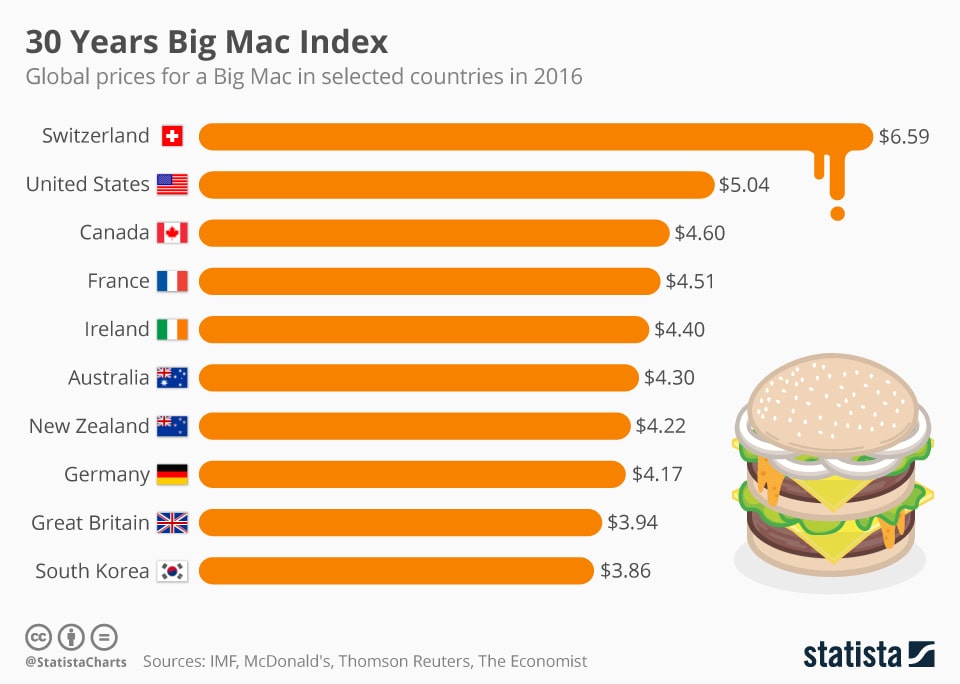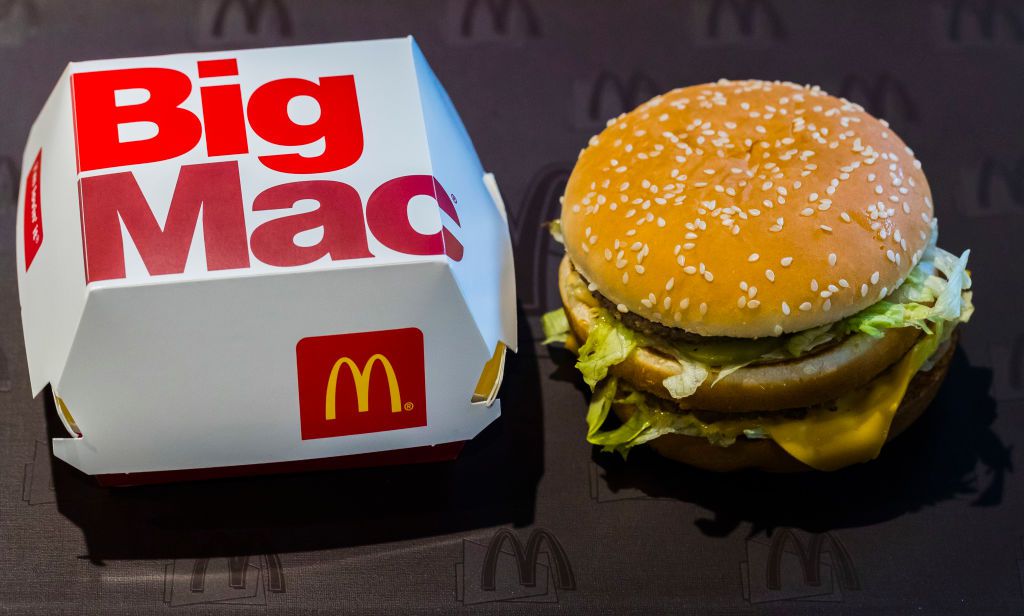The big Mac index is by far the most famous index based on the concept of PPP and is known to every economics student in the world, which was developed by Pam Woodall who was an economics editor for Asia in the September of 1966.
The concept and why was it required
The concept of the big mac index is based as a fun way to explain the concept of purchasing power parity or PPP.
It means that in the long run the price of a basket of goods say milk, almonds, clothes etc. shall be same all over the world. It is based on the law of one price that is defined by Investopedia as follows “The law of one price is the economic theory that the price of a given security, commodity or asset has the same price when exchange rates are taken into consideration.” PPP is just the generalization of this law.
Now why was it required , well because you can calculate the size and strength of an economy based on its GDP (Gross Domestic Product) the most favourite among macroeconomists, which is the sum total of all the production minus consumption. But one cannot tell the Standard of Living by way of only GDP, yes it provides a hint but it is not enough for the people comparing themselves with other countries.
Everyone knows that your Standard of Living is based on how much you can buy or purchase. The power to purchase is called Purchasing Power and if you still remember the first sentence of this section, Purchasing power is mentioned with the word ‘parity’ well it means equality so PPP is a measure of the standard of living of the people if the people can buy the same things at the same price irrespective of the nations that means, if the cost of 1 litre of milk , 500 grams of almonds and a cheap t shirt is say $2000 in US and I have ?2000 note in my pocket then i can buy all these things even if my 2000 rupees is only 29 dollars at an exchange rate of 67 per dollar.
The big Mac’s concept
The Big Mac assumes that the basket consists of one good, the McDonald’s Big Mac hamburger (in India it is called Chicken Maharaja) whose recipe is almost the same all over the world in a total of 41 countries, so are the ingredients and the cost of production, the only difference is the price of selling which should also be same any difference will therefore be due to only the exchange rate.

Why is it used?
It uses the rate of a big mac and compares the prices of big mac in two countries and the nominal exchange rate of their currencies. If the cost of big mac in country one is greater than country two and the price is also greater than the exchange rate then the first currency is overvalued.
An example as per the latest values
The cost of production in US is $5.06 and in UK it costs only 3.09 pounds
So the implied rate of exchange is 3.09/5.06 (pounds per dollar) which is equal to 0.61 but the actual exchange rate at that time was 0.83
So as market exchange rate is greater than the implied rate and therefore the pound is undervalued by 36%.
What are its criticisms?
Well the index is flawed as the cost of several ingredients is not the same as some have to be imported from other countries such as Iceland had to import the entire burger from Europe therefore its currency used to remain overvalued.
Many countries have by force tried to control the prices of the big mac by giving cheap labour, cheap rentals, this used to cause the big mac to be cheaper although its actual cost was more.
It is not a common thing in developing countries where it is a luxury to eat in a Mac Donald’s and it is also expensive.

My view
Well nothing is perfect but the big mac is still used by several textbooks to teach ppp and exchange rate because it is simple to understand as The Economist says ‘’ its aim is to make economics more digestible’’.
The fame of the big mac index spawned several more such indices which try to either have a concentrated view or remove a flaw in the big mac. Such as the KFC index for Africa, IPod index, etc.
Let’s make world a fan of burgernomics!
By Aviraj Singh Mehta
